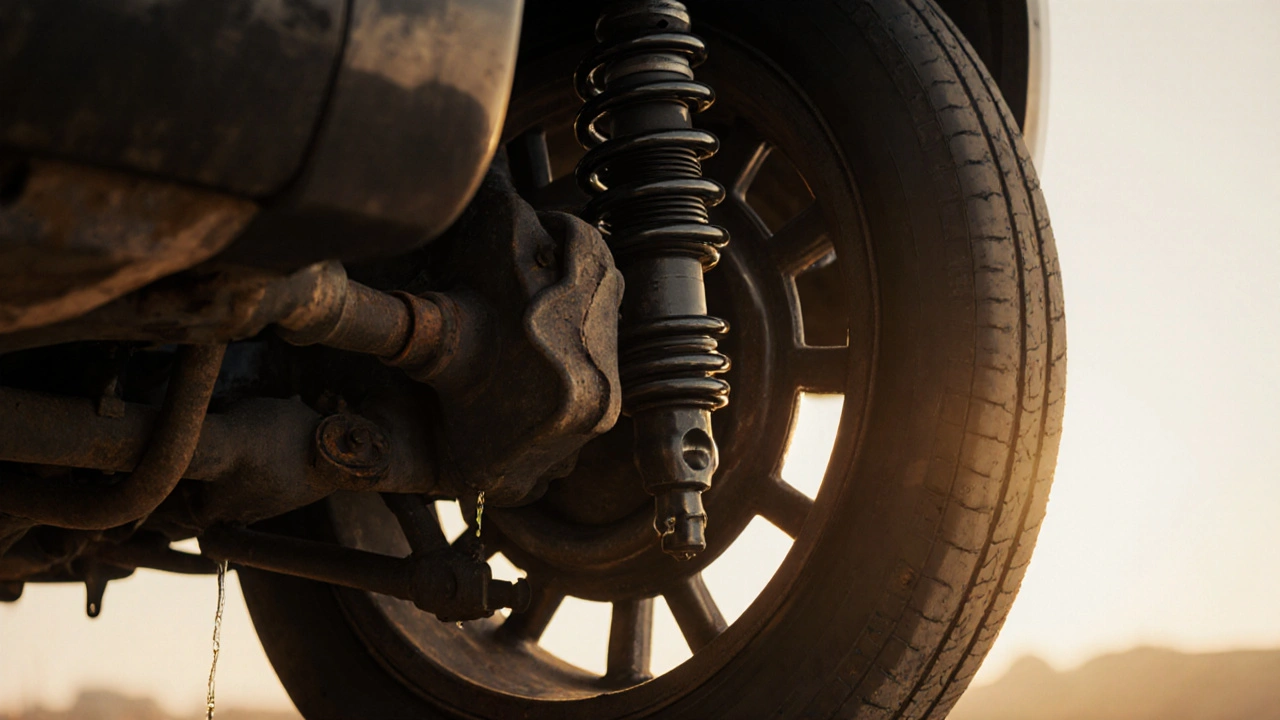When your car feels bouncy, noisy, or like it’s floating over bumps, the problem isn’t your tires—it’s probably your car shocks, devices that control spring movement and keep tires in contact with the road. Also known as shock absorbers, they’re not just comfort gadgets—they’re critical for stopping distance, steering control, and tire life. Most drivers don’t think about them until something goes wrong, but worn shocks don’t just make the ride rough—they make it dangerous.
Car shocks work with your suspension system, the network of springs, struts, and links that connect wheels to the frame. While springs absorb bumps, shocks dampen the bounce. Without them, your car would keep bouncing after every pothole. You’ll notice this in real life: if your car dives hard when braking, sways in turns, or feels loose on uneven roads, your shocks are likely worn out. And yes, they wear out—usually between 50,000 and 100,000 miles, depending on road conditions and driving style. A simple bounce test (press down on a corner and let go—if it bounces more than once or twice, it’s time to check them).
Fixing shocks isn’t just about replacing parts. It’s about restoring control. Bad shocks mean your tires don’t grip properly, which increases stopping distance by up to 20% in wet conditions. That’s not a small risk—it’s the difference between avoiding a crash and hitting one. They also cause uneven tire wear, which means you’ll replace tires sooner. And if you’re towing or hauling, worn shocks make the whole setup unstable. You don’t need to upgrade to performance shocks unless you’re racing—just replacing worn ones with OEM-quality parts is enough to bring back safety and confidence.
What you’ll find below are real, practical posts that cover exactly what matters: how to tell if your shocks are failing, what tools and steps are needed to replace them, how they relate to other suspension parts like struts and sway bars, and why ignoring them leads to bigger, costlier problems. No fluff. No theory. Just what you need to know to keep your 2018 car safe, stable, and under control.
Posted by
Liana Harrow
14 Comments

Learn how springs, shocks, and struts work together to keep your car stable and safe. Discover signs of wear, when to replace them, and how to save money with proper maintenance.
read morePosted by
Liana Harrow
12 Comments

Learn how to spot worn suspension parts-springs, shocks, and struts-and when to replace them for safety and better handling. Real costs, signs of failure, and trusted brands for UK drivers.
read more